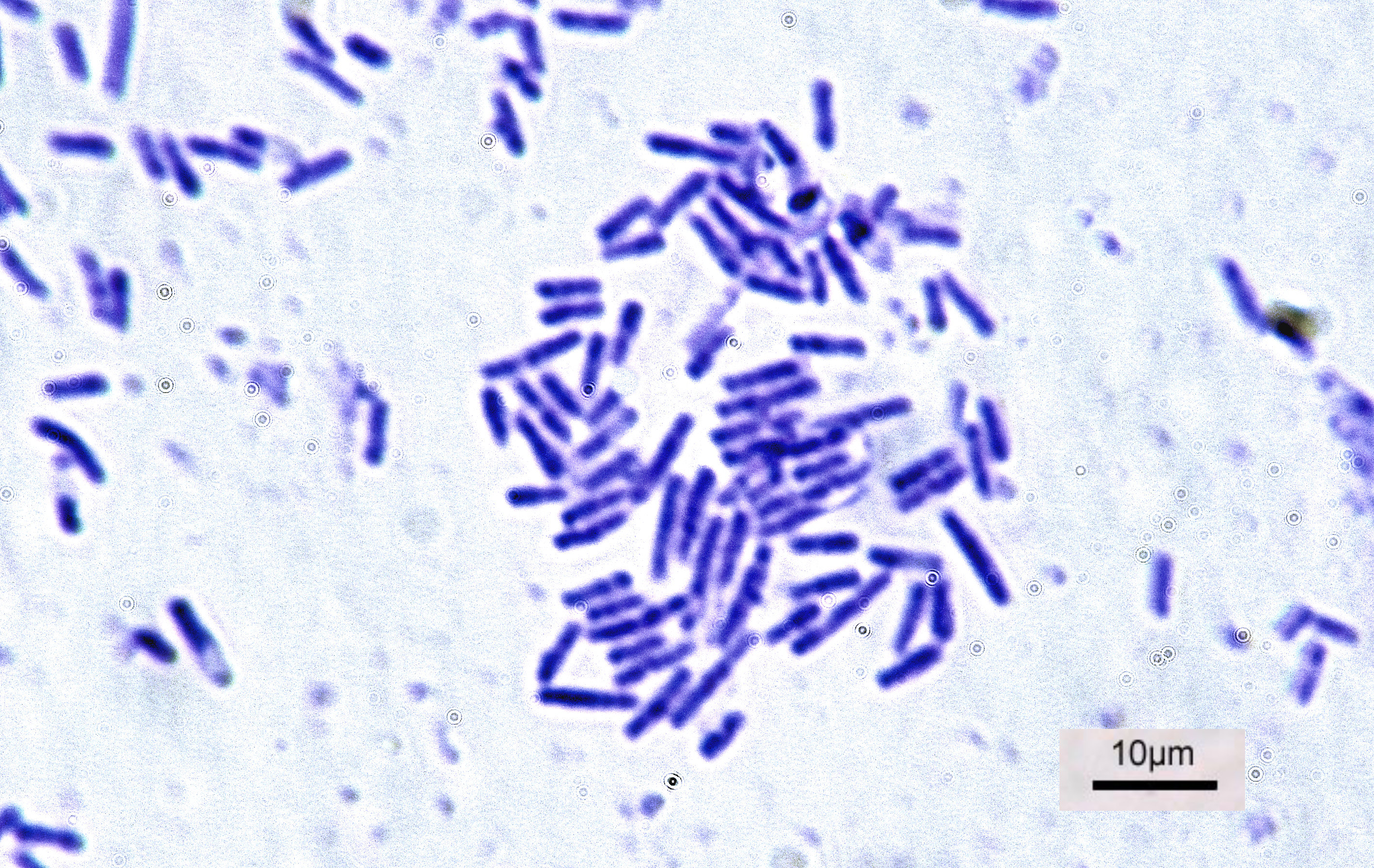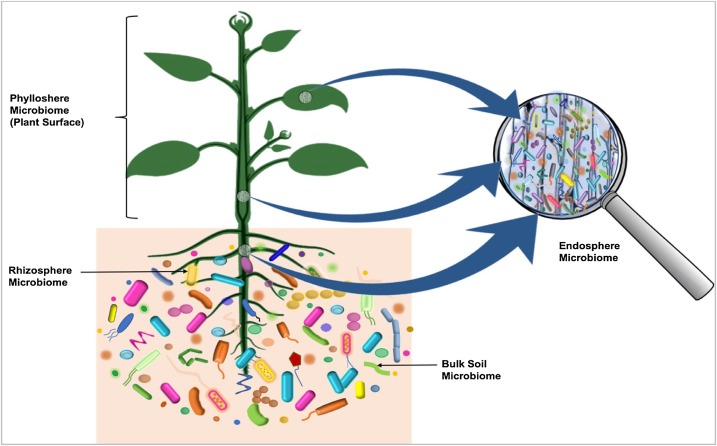|
Bacteroides (Prevotella) Ruminicola Subsp. Brevis Biovar 3
''Prevotella bryantii'', previously known as '' Bacteroides ruminicola ruminicola subsp. brevis'' biovar 3, is a species of bacterium. ''Prevotella'' species are part of the human oral and vaginal microbiota Microbiota are the range of microorganisms that may be commensal, symbiotic, or pathogenic found in and on all multicellular organisms, including plants. Microbiota include bacteria, archaea, protists, fungi, and viruses, and have been found t .... They play a role in the pathogenesis of periodontal disease, gingivitis, extraoral and some odontogenic infections, and strains are usually carried in families, in so-called intrafamilial carriage. It is also associated with carotid atherosclerosis. References Further reading *Species clustering: * * * * * External links *Microbe wiki [...More Info...] [...Related Items...] OR: [Wikipedia] [Google] [Baidu] |
Bacteria
Bacteria (; singular: bacterium) are ubiquitous, mostly free-living organisms often consisting of one biological cell. They constitute a large domain of prokaryotic microorganisms. Typically a few micrometres in length, bacteria were among the first life forms to appear on Earth, and are present in most of its habitats. Bacteria inhabit soil, water, acidic hot springs, radioactive waste, and the deep biosphere of Earth's crust. Bacteria are vital in many stages of the nutrient cycle by recycling nutrients such as the fixation of nitrogen from the atmosphere. The nutrient cycle includes the decomposition of dead bodies; bacteria are responsible for the putrefaction stage in this process. In the biological communities surrounding hydrothermal vents and cold seeps, extremophile bacteria provide the nutrients needed to sustain life by converting dissolved compounds, such as hydrogen sulphide and methane, to energy. Bacteria also live in symbiotic and parasitic re ... [...More Info...] [...Related Items...] OR: [Wikipedia] [Google] [Baidu] |
Bacteroidota
The phylum Bacteroidota (synonym Bacteroidetes) is composed of three large classes of Gram-negative, nonsporeforming, anaerobic or aerobic, and rod-shaped bacteria that are widely distributed in the environment, including in soil, sediments, and sea water, as well as in the guts and on the skin of animals. Although some ''Bacteroides'' spp. can be opportunistic pathogens, many ''Bacteroidota'' are symbiotic species highly adjusted to the gastrointestinal tract. ''Bacteroides'' are highly abundant in intestines, reaching up to 1011 cells g−1 of intestinal material. They perform metabolic conversions that are essential for the host, such as degradation of proteins or complex sugar polymers. ''Bacteroidota'' colonize the gastrointestinal tract already in infants, as non-digestible oligosaccharides in mother milk support the growth of both '' Bacteroides'' and '' Bifidobacterium'' spp. ''Bacteroides'' spp. are selectively recognized by the immune system of the host through specif ... [...More Info...] [...Related Items...] OR: [Wikipedia] [Google] [Baidu] |
Bacteroidia
Bacteroidales is an order of bacteria. Notably it includes the genera '' Prevotella'' and '' Bacteroides'' , which are commonly found in the human gut microbiota. Phylogeny The currently accepted taxonomy is based on the List of Prokaryotic names with Standing in Nomenclature and National Center for Biotechnology Information The National Center for Biotechnology Information (NCBI) is part of the United States National Library of Medicine (NLM), a branch of the National Institutes of Health (NIH). It is approved and funded by the government of the United States. T ... (NCBI). Notes See also * List of bacterial orders * List of bacteria genera References Bacteroidia {{bacteroidetes-stub ... [...More Info...] [...Related Items...] OR: [Wikipedia] [Google] [Baidu] |
Prevotellaceae
''Prevotellaceae'' is a family of bacteria from the order Bacteroidales. As a member of the phylum Bacteroidota, its species are gram negative – meaning their outer cell wall contains lipopolysaccharides. Since they are anaerobes, members of Prevotellaceae can live in areas where there is little to no oxygen – such as the guts of mammals. Prevotellaceae is split into 4 genera: Hallella, Paraprevotella, Prevotella, and Alloprevotella. These 4 genera include 51 different bacterial species. The genus ''Prevotella'' is known for its role in the human gastrointestinal microbiota. ''Prevotella'' species are among the most numerous microbes culturable from the rumen and hind gut of cattle and sheep, where they help the breakdown of protein and carbohydrate foods. They are also present in humans, where they can be opportunistic pathogens. ''Prevotella'', credited interchangeably with ''Bacteroides melaninogenicus'', has been a problem for dentists' patients for years. As a human p ... [...More Info...] [...Related Items...] OR: [Wikipedia] [Google] [Baidu] |
Prevotella
''Prevotella'' is a genus of Gram-negative bacteria. ''Prevotella'' spp. are members of the oral, vaginal, and gut microbiota and are often recovered from anaerobic infections of the respiratory tract. These infections include aspiration pneumonia, lung abscess, pulmonary empyema, and chronic otitis media and sinusitis. They have been isolated from abscesses and burns in the vicinity of the mouth, bites, paronychia, urinary tract infection, brain abscesses, osteomyelitis, and bacteremia associated with upper respiratory tract infections. ''Prevotella'' spp. predominate in periodontal disease and periodontal abscesses. Role in gut microbiota Human gut is mainly inhabited by two phyla of bacteria—''Bacillota'' and ''Bacteroidota'', the latter mostly dominated by '' Bacteroides'' and '' Prevotella'' genera. ''Prevotella'' and ''Bacteroides'' are thought to have had a common ancestor. Formally, the two genera were differentiated in 1990. However classification is still ... [...More Info...] [...Related Items...] OR: [Wikipedia] [Google] [Baidu] |
Bacteroides Ruminicola
''Bacteroides'' is a genus of Gram-negative, obligate anaerobic bacteria. ''Bacteroides'' species are non endospore-forming bacilli, and may be either motile or nonmotile, depending on the species. The DNA base composition is 40–48% GC. Unusual in bacterial organisms, ''Bacteroides'' membranes contain sphingolipids. They also contain meso-diaminopimelic acid in their peptidoglycan layer. ''Bacteroides'' species are normally mutualistic, making up the most substantial portion of the mammalian gastrointestinal microbiota, where they play a fundamental role in processing of complex molecules to simpler ones in the host intestine. As many as 1010–1011 cells per gram of human feces have been reported. They can use simple sugars when available; however, the main sources of energy for ''Bacteroides'' species in the gut are complex host-derived and plant glycans. Studies indicate that long-term diet is strongly associated with the gut microbiome composition—those who e ... [...More Info...] [...Related Items...] OR: [Wikipedia] [Google] [Baidu] |
Microbiota
Microbiota are the range of microorganisms that may be commensal, symbiotic, or pathogenic found in and on all multicellular organisms, including plants. Microbiota include bacteria, archaea, protists, fungi, and viruses, and have been found to be crucial for immunologic, hormonal, and metabolic homeostasis of their host. The term ''microbiome'' describes either the collective genomes of the microbes that reside in an ecological niche or within the microbes themselves. The microbiome and host emerged during evolution as a synergistic unit from epigenetics and genetic characteristics, sometimes collectively referred to as a holobiont. The presence of microbiota in human and other metazoan guts has been critical for understanding the co-evolution between metazoans and bacteria. Microbiota play key roles in the intestinal immune and metabolic responses via their fermentation product ( short-chain fatty acid), acetate. Introduction All plants and animals, from simple l ... [...More Info...] [...Related Items...] OR: [Wikipedia] [Google] [Baidu] |
Odontogenic Infection
An odontogenic infection is an infection that originates within a tooth or in the closely surrounding tissues. The term is derived from '' odonto-'' (Ancient Greek Ancient Greek includes the forms of the Greek language used in ancient Greece and the ancient world from around 1500 BC to 300 BC. It is often roughly divided into the following periods: Mycenaean Greek (), Dark Ages (), the Archaic p ...: , – 'tooth') and '' -genic'' (Ancient Greek: , ; – 'birth'). The most common causes for odontogenic infection to be established are dental caries, deep fillings, failed root canal treatments, periodontal disease, and pericoronitis. Odontogenic infection starts as localised infection and may remain localised to the region where it started, or spread into adjacent or distant areas. It is estimated that 90-95% of all orofacial infections originate from the teeth or their supporting structures and are the most common infections in the oral and maxilofacial region. Odo ... [...More Info...] [...Related Items...] OR: [Wikipedia] [Google] [Baidu] |
Journal Of Clinical Microbiology
The ''Journal of Clinical Microbiology'' is a monthly medical journal published by the American Society for Microbiology. The journal was established in 1975. The editor-in-chief is Alexander J. McAdam (Boston Children's Hospital). It is a delayed open access journal full text content is available free after a six-month embargo. Abstracting and indexing The journal is abstracted and indexed in: According to the ''Journal Citation Reports'', the journal has a 2021 impact factor of 11.677 See also *Clinical medicine *Clinical research Clinical research is a branch of healthcare science that determines the safety and effectiveness ( efficacy) of medications, devices, diagnostic products and treatment regimens intended for human use. These may be used for prevention, treat ... * Medical microbiology References External links *{{Official website, http://jcm.asm.org/American Society for Microbiology Delayed open access journals Microbiology journals Monthly journals ... [...More Info...] [...Related Items...] OR: [Wikipedia] [Google] [Baidu] |
Carotid Artery
Carotid artery may refer to: * Common carotid artery, often "carotids" or "carotid", an artery on each side of the neck which divides into the external carotid artery and internal carotid artery * External carotid artery The external carotid artery is a major artery of the head and neck. It arises from the common carotid artery when it splits into the external and internal carotid artery. External carotid artery supplies blood to the face and neck. Structure ..., an artery on each side of the head and neck supplying blood to the face, scalp, skull, neck and meninges * Internal carotid artery, an artery on each side of the head and neck supplying blood to the brain {{SIA ... [...More Info...] [...Related Items...] OR: [Wikipedia] [Google] [Baidu] |
Atherosclerosis
Atherosclerosis is a pattern of the disease arteriosclerosis in which the wall of the artery develops abnormalities, called lesions. These lesions may lead to narrowing due to the buildup of atheromatous plaque. At onset there are usually no symptoms, but if they develop, symptoms generally begin around middle age. When severe, it can result in coronary artery disease, stroke, peripheral artery disease, or kidney problems, depending on which arteries are affected. The exact cause is not known and is proposed to be multifactorial. Risk factors include abnormal cholesterol levels, elevated levels of inflammatory markers, high blood pressure, diabetes, smoking, obesity, family history, genetic, and an unhealthy diet. Plaque is made up of fat, cholesterol, calcium, and other substances found in the blood. The narrowing of arteries limits the flow of oxygen-rich blood to parts of the body. Diagnosis is based upon a physical exam, electrocardiogram, and exercise str ... [...More Info...] [...Related Items...] OR: [Wikipedia] [Google] [Baidu] |



